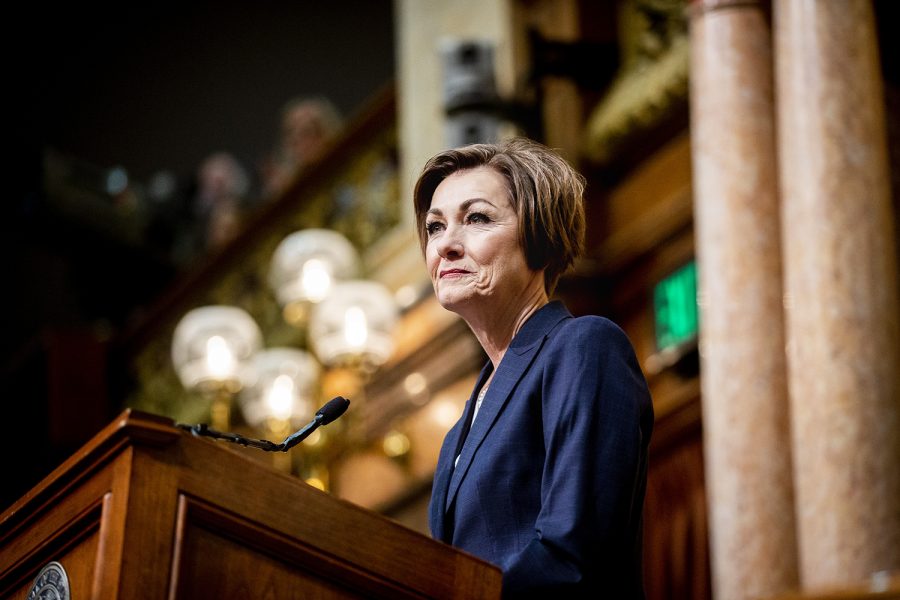Gov. Kim Reynolds plans to release internal COVID-19 models between the UI College of Public Health and the state “at some point”
An internal contract between the UI and the Iowa Department of Public Health was made public on Monday, and Gov. Kim Reynolds said during her daily press conference that models are only as good as the assumptions given to them, and did not give a date when these predictive COVID-19 models will be released.
Gov. Kim Reynolds gives the Condition of the State address at the Iowa State Capitol on Tuesday, January 14, 2020.
April 13, 2020
Gov. Kim Reynolds said at a Monday press conference that she plans to release internal, predictive COVID-19 models between the University of Iowa and the Iowa Department of Public Health at some point, following an April 7 contract between the state and the UI that was made public by the Associated Press.
“This is a model and models are only as good as the assumptions we feed into them,” she said Monday.
Reynolds reiterated multiple times during the press conference that models are based on assumptions, and that every mitigation effort has been based on information in Iowa. The contract binds the UI from releasing the Iowa-specific models that are predictive of what the pandemic will look like, unless given permission by the state, and what mitigation efforts should take place.
“As we’ve seen throughout this entire process, the modeling has been wildly off,” Reynolds said, referring to popular models from the University of Washington.
Reynolds did not give a date for when they plan to release the models, and said that there were conversations prior to April 7 with the UI about looking at Iowa-specific data.
“We really wanted to make sure [the UI] had enough data to make sure that any modeling they actually did was meaningful based on what’s actually happening here in Iowa,” said Deputy Director of the Iowa Department of Public Health Sarah Reisetter. “As the governor has explained, models can be helpful, but they are not going to necessarily be prescriptive in the actions that we take.”
Iowa is currently using data from Regional Medical Coordination Centers, where regions are scored on a scale of one to 12, taking into account how many Iowans are hospitalized in a region and how many resources are available at hospitals, such as beds and ventilators. Reynolds said the state currently has a recovery rate of 43 percent.
Once a region reached a 10, that is when a shelter-in-place order is considered to be necessary. Region five, which includes Johnson County, recently decreased from a nine to an eight. Region six, which includes Linn County, and region one are both currently at an eight, and the other regions are at a seven or lower. Reynolds has not issued a shelter-in-place in any part of the state and has not indicated that she plans to do so.
Reynolds said that Iowa can expect to see a peak in COVID-19 cases later this month. She said that more than 10 percent of all cases in Iowa and 53 percent of all deaths have been from long-term care facilities. Reynolds said she has been working with the federal government to receive more resources for rapid testing.
As of April 13, Iowa has 1,710 positive COVID-19 cases and 16,986 negative tests. Iowa has more than 3,500 tests available, and there have been 43 deaths.



